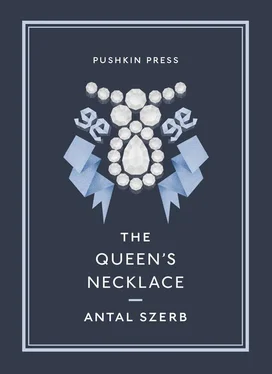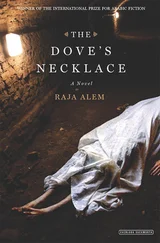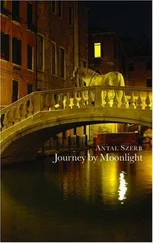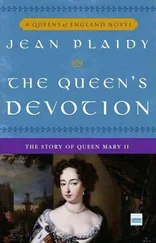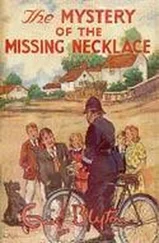This is one side of the coin. There is another. Guilty conscience can manifest itself in other ways.
Mercier not only reveals that everyone in Paris lisped, but also that everyone went about with one shoulder held higher than the other — which gave the citizens a somewhat diabolical appearance.
The young Grimod de la Reynière, the son of an enormously wealthy man, sent out a grotesque invitation to dinner to a motley company of writers, tailors’ assistants, actors and doctors. It was bordered in funeral black, and was so unusual that the King had the example that came into his hands framed. On arrival the guests were asked by the porter which Reynière they were calling on — the old man, that bloodsucker of the people, or the young, the protector of widows and orphans. After they had been kept waiting for a quarter-of-an-hour in a darkened room, they were finally shown in to the dining area, which was lit by a thousand candles. In each of its four corners stood an altar-boy swinging a censer.
“Whenever my parents have visitors,” the host explained, “there are always three or four who feel the need for purification by incense, so I thought I’d save you the trouble of asking.”
This same rather interesting young man was once asked why he hadn’t bought himself a seat on the bench (at that time in France you paid to become a judge), and why he remained a simple lawyer.
“Because if I were a judge,” he replied, “I might easily find myself in the position of having to hang my father. At least as a lawyer I would be free to defend him.”
The situation of the wealthy father and the son rebelling against wealth was often repeated in this sort of grotesque, jocular way in the period. “It is typical of the age,” Sainte Beuve would write later, “that what began in frivolity ended in bloodshed.” But the underlying and wholly serious fact was that young Grimod de la Reynière had a guilty conscience.
There were those who attempted to silence their pangs of conscience through sensibility and charitable deeds; others simply revelled in their own wickedness the way the first group did in their benevolence. Both responses combined in one man: the Duc de Lauzun was the most dedicated roué of his time, an inveterate gambler and womaniser, and at the same time the sentimental co-founder of the Order of Steadfastness. Some of the writers, like Marmontel, Florian or Thomas, were so naively sensible and idyllic that it is difficult for us to understand how anyone at the time could read anything so false to nature; others were not at all naive — learned, cynical and acerbic — indeed, surprisingly modern. Their work was the sincere expression of a group purged of all self-delusion. And these are the really good writers: Choderlos de Laclos, Chamfort, Beaumarchais.
The rococo impulse sought to distance love from everything that was deep and passionate: it became a matter of charming games. No one ever died, relationships could be lightly broken and everyone was easily consoled. In Laclos’s wonderful novel Les liaisons dangereuses the rococo idea of love is pushed to the point of absurdity, perhaps to reveal it in all its danger. Love is shown in this book not as charming but as a pitiless toying with other people’s hearts, with the perpetrator revelling in the misery he produces, like a dramatist enjoying the writhings of his own characters. The hero, Valmont, is an aimable roué ; his coldly superior deceptions are naturally always adored by the ladies (in life just as much as they were in books), and Valmont is unquestionably a forerunner of Richardson’s Lovelace, for whom women readers wept for a hundred years. But there is a crucial difference between the two. Lovelace first seduces the middle-class Clarissa but then comes truly to love her, though he refuses to marry her for reasons of aristocratic pride. But Valmont deceives the pure-souled Mme Tourvelt out of simple vanity, according to Taine. And this is still to understate, because Valmont is motivated not only by vanity but by a self-regarding wickedness which is actually satanic. Moreover, Valmont is not the real driver of events, but his cold ex-mistress Mme de Merteuil. She directs his amours simply in order to destroy the lives of the women who become her prey. The novel is a handbook of sexual psychopathology, and is often invoked as an example of mental cruelty.
It is interesting too, how strongly the events in the novel found an echo in aristocratic society. Chamfort referred to it constantly, and the Comte de Tilly speaks of it, and of its harmful influence, at some length in his memoirs. He calls Laclos the genius of wickedness, and says: “His book was one of the waves pouring into the ocean of the French Revolution to cleanse the throne.” And yet there is nothing revolutionary about it — it is just a love story, nothing more.
So that was how this society saw itself: so fundamentally wicked that it seemed almost to revel in the artistic perfection of its own wickedness. Tilly thought that the novel helped prepare the way for the Revolution by laying bare the immorality of the aristocracy, whether real or supposed. But he himself is an example of the way the aristocrats themselves delighted in the revelation. It is rather like those American financiers who take pleasure in reading the novelistic indictments of Upton Sinclair, Theodore Dreiser and Sinclair Lewis.
A rather less open hostility to the ruling class is found in the dis-illusionment and cynicism of Chamfort. The illegitimate son of a nobleman, he was an embittered and defiant déclassé . As a young man — when, according to one of his mistresses women would begin by thinking of him as an Adonis but then discover he was a Hercules — he enjoyed the favour of high-born ladies. Later his body and life were blighted by venereal disease, which in those times struck down the dissolute like the workings of an ancient curse. There is scarcely a memoir in which it does not feature.
Chamfort’s resentment of the aristocratic world is an unusual and complex phenomenon. Certainly he had no cause for complaint about not being accepted by it. He received two pensions from the King by right, was made secretary to the Duc de Condé, reader to the Duc d’Artois and secretary to Mme Elisabeth. He became an Academician, and lodged with the Comte de Vaudreuil. But his bitterness arose from precisely the fact that he was accepted. As a pampered writer proud of his gifts he refused to play the role of court jester assigned to the intellectual in an aristocratic society. “It is a ridiculous thing to grow old as an actor in a theatrical company in which you count as only half a man.” Later he provided the single most celebrated slogan for the Revolution. He is said to be the source of the opening words of the famous pamphlet by Sieyès: “ Qu’est-ce que le Tiers État? Tout. Qu’a-t-il été jusqu’à présent dans l’ordre politique? Rien. ”—What is the Third Estate? Everything. What has it ever been in the political order? Nothing. And again: “ Guerre aux châteaux! Paix aux chaumières! ”—War on the chateaux! Peace among the cottages!
Chamfort is the most important forerunner of nineteenth-century pessimism. Schopenhauer learnt much from him. Many of his sayings still in circulation are wrongly attributed to the great German philosopher, who occasionally forgot to mention his sources. But their construction is lighter, altogether more French, than Schopenhauer’s, and thus more ‘modern’. His aphorisms might have come from the pens of such contemporary French ironists as Paul Morand, Montherlant or Cocteau. With the reader’s permission, we shall translate a few of these, since there is no other document that so consistently and concisely expresses the guilty conscience of the years preceding the Revolution.
Читать дальше
